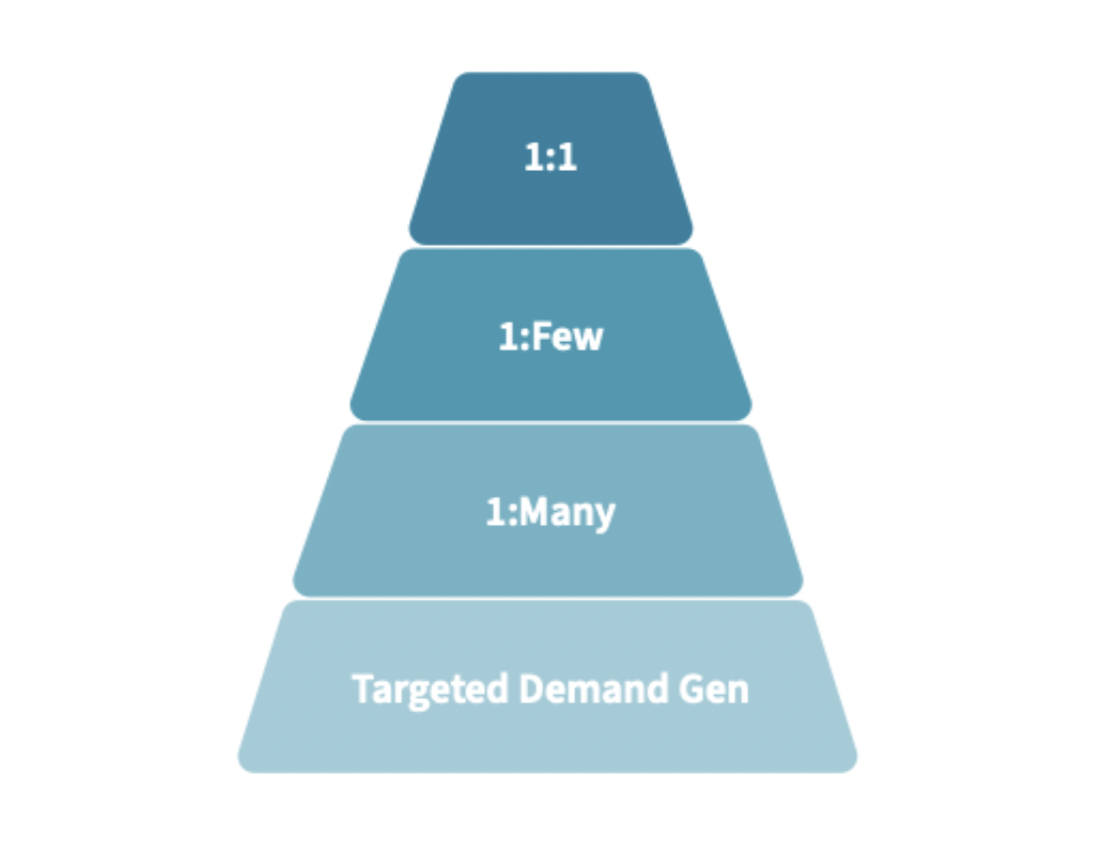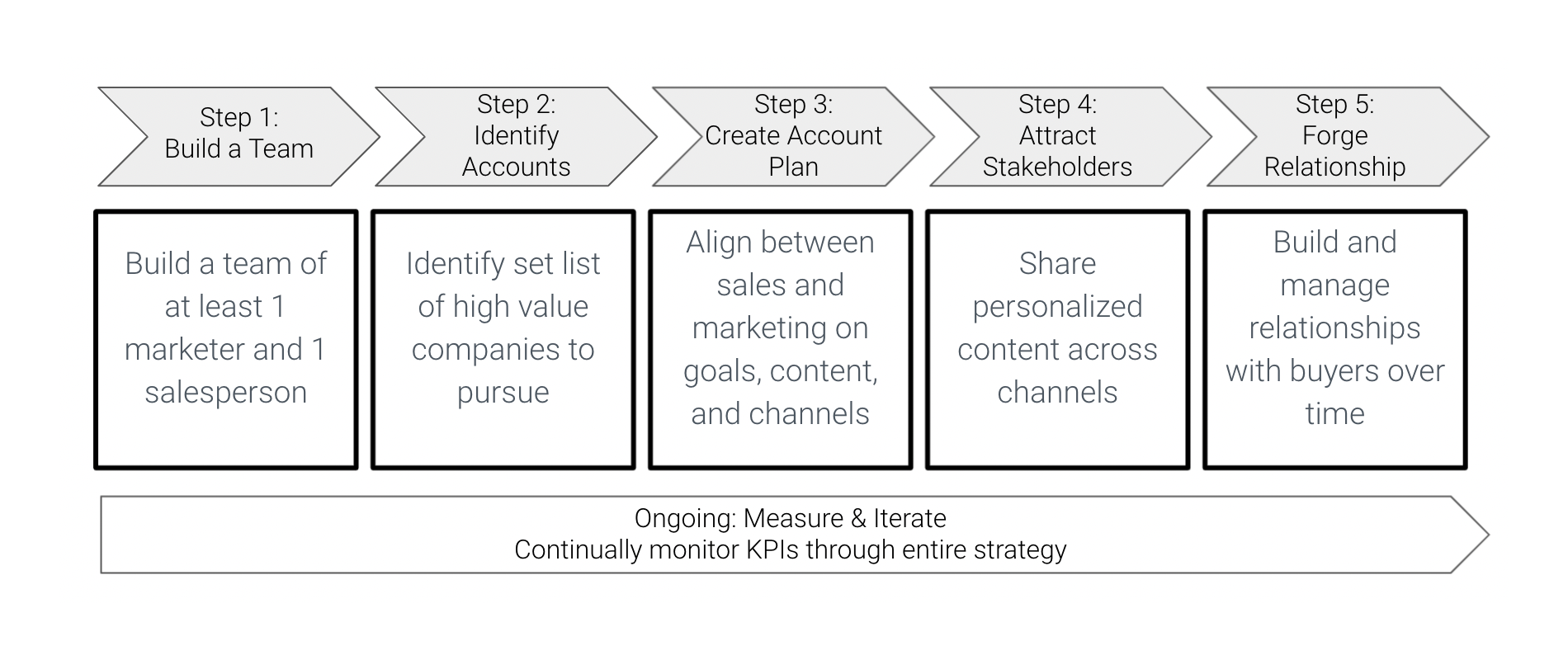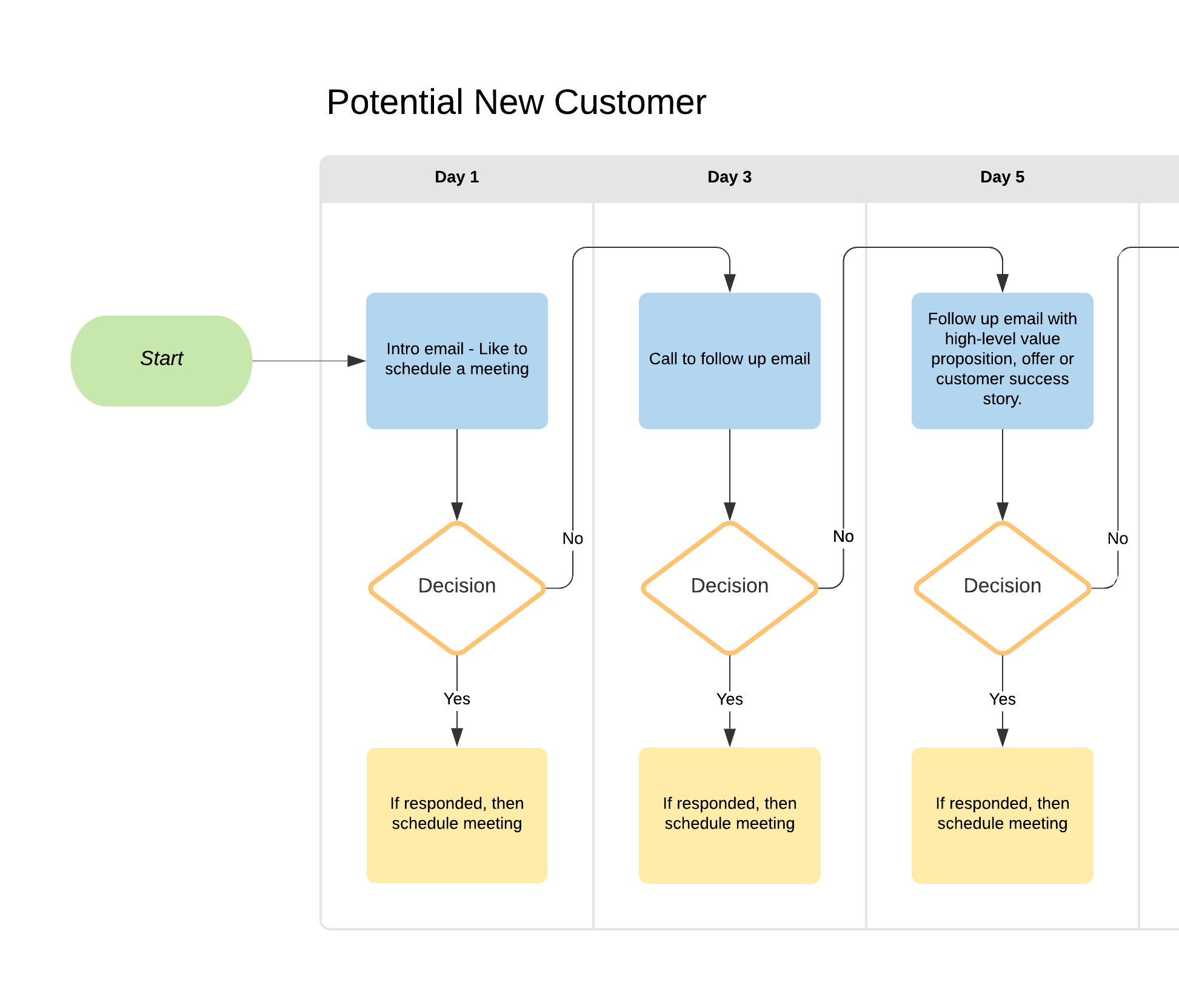What is ABM?
ABM is a growth strategy in which Marketing and Sales work together to create personalised buying experiences for a select set of high value companies.
It really shouldn't use 'Marketing' in the title as it's an alignment of Marketing and Sales.
So we will go with ABX, or Account Based Experience!
Why ABX?
By focusing Marketing and Sales efforts on the accounts most likely to generate revenue or meet other strategic goals, ABX helps Marketers and Sales people to scale growth and revenue by improving their ability to land the key target accounts that Sales is dying to land.
Is all ABX the same?
There are different types of ABM based on the potential value of the account. The spectrum ranges from truly one-on-one conversations with the largest accounts to technology-driven account-based programs with thousands of lower-value targets.
- One-to-One: Delivers highly customised experiences for a very limited number of valuable accounts.
- One-to-Few: Focuses on small groups or clusters of accounts with similar business imperatives.
- One-to-Many: Uses technology to find accounts, personalise interactions to individuals within those accounts, and measure results by account.
- Targeted Demand Generation: A broad style that bypasses personalisation to drive even more scale.

Who is a good fit for ABX?
Generally, there are three simple considerations to make here:
- Small, viable number of customers
- Expensive product or long buying cycle
- Clients have committee-style buying
There’s no rule that says you need to practice only an account-based approach or only traditional demand generation. Instead, think of it as a spectrum.
On one end are companies selling only to the largest 100 global companies. The vast majority of their efforts are going to be account- based.
On the other end are companies selling into the small business market. The majority of their efforts are going to be focused on demand generation.
Most likely, you’re somewhere in the middle, so you’ll want to balance the two strategies.
How To Execute ABX
Below outlines the 5 steps to creating successful ABX campaigns:

Step 1: Build a team
We need at least one Marketer and one Sales Person to be part of the ABX Team. There is a sharing of resources that takes place and it can be quite different to the ‘Marketing Handoff to Sales’ model, mostly as there are multiple stakeholders within a potential deal. So, some stakeholders may be ready to talk to Sales (eg our internal ‘Champion’) but others may still need nurturing (eg Budget Holder). Using a CRM platform like HubSpot will give both Marketing and Sales people a single destination to track and manage all communications and user behaviours.
Step 2: Identify Accounts
We need companies or industries to target. Selection can be based on anything from industries you have had success with in the past, existing clients with other brands/opportunities or just companies you would love to work with.
Then, within the companies or industries you select, you need to find the key decision makers or influencers within those companies/industries. You can use various tools here to help, such as LinkedIn Sales Navigator or Apollo.io (there are others as well).
Again, having a CRM like HubSpot, existing or new companies can be tagged as Target Accounts. You will then have a single destination to view exactly where each of these companies sit in the purchase cycle, plus other relevant data such as:
When they were last ‘touched’ by someone within your company. The Target Account’s last engagement with you (eg a form completion or email open).
3. Create an Account Plan
At this stage we want to:
- Understand relevant ‘personas’ or job roles.
- Develop content by persona or job role (eg email, landing pages, ads, etc). Content includes product features/benefits, relevant industry research, product value to the particular persona, Incentives/Opportunities, Testimonials, etc.
- Agree on how leads are ‘scored’ and handled between sales and marketing.
- Develop your language or ‘playbooks’ for conversations and sales closing.
- If you have a CRM, setup to manage the Automation, Lead Scoring and Reporting.
It's important to remember the account journey isn’t linear. There are six B2B buying “jobs” that customers must complete to their satisfaction to finalise a purchase:
- Problem identification. “We need to do something.”
- Solution exploration. “What’s out there to solve our problem?”
- Requirements building.“What exactly do we need the purchase to do?”
- Supplier selection.“Does this do what we want it to do?”
- Validation. “We think we know the right answer, but we need to be sure.”
- Consensus creation.“We need to get everyone on board.”
And if you only take one thing out of this article, please make it this:
Buyers don’t want to be sold to. They want to solve their problem, and they’re going to do whatever is necessary to get there.
4. Attract Stakeholders
Now everything is in place, it’s time to execute! Again, if you have a CRM like HubSpot, everything should be set up and you are ready to press 'go'.
Remember to have your cadence plan in place. Below is an example of swim lanes we have used for clients (note, this may or may not be right for you).
These swim lanes are for a potential new customer, but you may also be talking to existing customers or even lapsed customers. In this instance the client objective was to book a meeting, so the cadence is based around that decision, did we book a meeting? If yes, great! If no, then move on to the next activity.

5. Forge Relationships
Once leads have been scored, we need to build out the relationships via the Sales and Marketing team.
Do you have your internal champions? Do we have all the buying roles covered? Are there any blockers we need to win over?
A CRM will house all contact and company data, so everyone knows exactly where deal stages are at and what communication is taking place.
Finally, we need to test and refine!
A big part of the success will be understanding what is working to help drive Sales. What content, campaigns, even conversations (Sales People) work best. Once this is understood, the process can be refined to increase efficiency and minimise wastage.
Now that we have outlined the steps, it's really important to 'think big, but start small'.
If you’ve been living in a lead-based world, adopting an account-based strategy may seem daunting. But just like when starting any new strategy, pursue an incremental approach—think big, but start small and gradually increase your speed as you gain confidence and experience.
In other words, don't make your first ABX activity targeting your top 5 dream clients! Start with smaller accounts, learn from that activity and build from there. A bit like this:
- Establish: When you start from zero, you’ll probably start with a pilot to prove early success.
- Operationalise: You’ve proven ABX success and are ready to take on more. Here, you add more accounts and create repeatable processes and best practices.
- Grow: Now you are fully in gear. Marketing and Sales are fully aligned not only philosophically, but also in practice, and they’re working to meet the same goals and objectives.
- Optimise: By now, you’ve pulled in your Customer Success team along with Marketing and Sales, so that your entire revenue team is running orchestrated campaigns.
Hopefully that helped you understand ABM/ABX a little more. Maybe it even inspired you to get started.
If you'd like help with executing your ABX activity, please get in touch by filling out the form below.
If you don't need help and are good to go, then I hope this article helps your activity become a huge success!

 Back to blog
Back to blog
